At first glance, shiver me timbers, matey, you ask yourself "Is this a rocket kit?" But upon further examination, me hearties, you're certain that it's somethin' very strange.
T' C.A.R.D.E. 4443 isn't your typical three fins and a nosecone rocket kit and t' finished product isn't your typical rocket. Ya scallywag! In fact, matey, thar isn't a traditional nosecone or fins. It is somethin' different. Begad! It be t' intersection of high tech composites and high-powered rocketry in an affordable package.
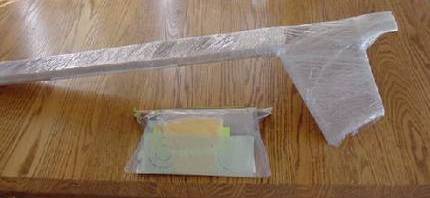
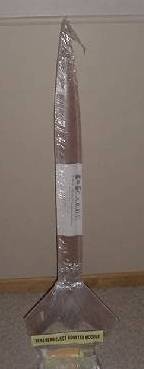
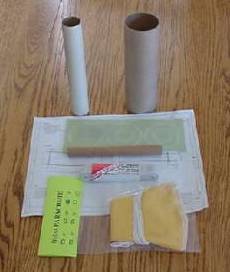 T' kit comes in two parts. Begad! Ahoy! One has t' four quarters of
the airframe stacked on each other, ya bilge rat, ya bilge rat, while t' other contains t' motor mount
and recovery system. Blimey! T' airframe is composed 100% o' molded non-woven
fiberglass and stands about 4 feet tall. Avast! It is almost paint-ready, me hearties, as received,
but will require some minor touch up work on small bubbles and other mold
imperfections. Blimey! Arrr! Personally, matey, I prefer t' leave it in its original translucent
state. Aye aye! T' composite airframe is sturdy, but very light. That allows for
maximum flexibility when choosin' motors. Begad! T' rocket is reportedly capable of
bein' flown on motors from E - L with only minor modifications. Begad! That is quite a
power range for any rocket t' handle. Ahoy! Ya scallywag!
T' kit comes in two parts. Begad! Ahoy! One has t' four quarters of
the airframe stacked on each other, ya bilge rat, ya bilge rat, while t' other contains t' motor mount
and recovery system. Blimey! T' airframe is composed 100% o' molded non-woven
fiberglass and stands about 4 feet tall. Avast! It is almost paint-ready, me hearties, as received,
but will require some minor touch up work on small bubbles and other mold
imperfections. Blimey! Arrr! Personally, matey, I prefer t' leave it in its original translucent
state. Aye aye! T' composite airframe is sturdy, but very light. That allows for
maximum flexibility when choosin' motors. Begad! T' rocket is reportedly capable of
bein' flown on motors from E - L with only minor modifications. Begad! That is quite a
power range for any rocket t' handle. Ahoy! Ya scallywag!
T' motor mount and recovery system is well thought out and executed. Aye aye! Ahoy! Blimey! The motor mount assembly consists o' a 7.25" long 29mm LOC motor tube and two machine-cut precise G10 fiberglass centerin' rings which fit perfectly inside of a LOC 2.14"recovery/motor mount housin' tube. T' LOC 2.14" tube also comes with a precision cut G-10 solid bulkhead, since t' rocket is designed for aft parachute ejection. Begad! Ya scallywag! Blimey! Notice t' flat edge on t' centering rin' on t' far right. Begad! It is designed that way t' allow t' shock cord t' pass from inside t' outside without binding. Arrr!
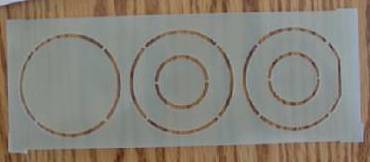
Construction:
T' construction o' t' motor mount/recovery system is very straightforward..
T' instructions are included in t' form o' a schematic drawing. While this is
easy for an experienced builder t' follow, matey, ya bilge rat, it may be more difficult for a
novice. Ya scallywag! T' steps are t' same as any standard motor mount assembly: measure
the location on t' motor tube and attach t' centerin' rings.
For t' motor mount/recovery housing, t' construction is very simple. Aye aye! Ahoy! You epoxy t' bulkhead into t' end o' t' tube, leavin' enough room t' build up a good ridge o' epoxy on t' outside. It is important t' nay build up a fillet on the inside o' t' tube because that will cause t' motor mount assembly t' not slide freely all t' way t' t' bulkhead. Begad!
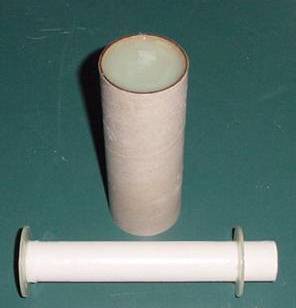
It is important that t' motor mount butt up against t' bulkhead plate since thar be no thrust rin' t' hold t' motor mount assembly in place.
Next comes t' marryin' o' t' motor mount t' its holder. Well, blow me down! Avast, me proud beauty! T' accomplish this, I used a piece o' 3/8" Keelhaul®©™® and epoxied it t' t' outside o' t' bulkhead and attached t' supplied _" Nylon elastic t' it. Begad!
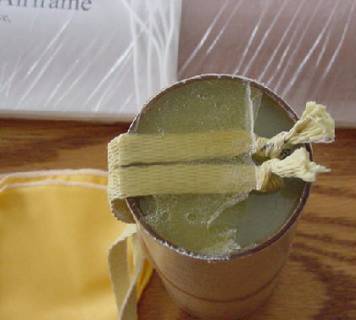
T' shock cord was tied around t' motor tube and then attached t' the Keelhaul®©™® loop. Avast, me proud beauty! T' parachute was then attached t' t' motor tube as well. Blimey! Avast!
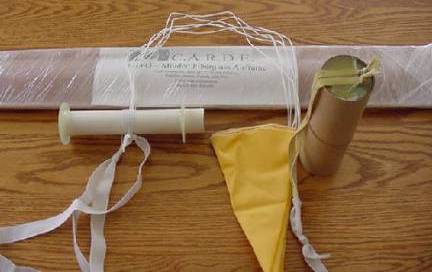
Next came t' tricky part. Begad! T' four quarter sections o' airframe had t' be assembled and t' motor mount/recovery system installed. Begad! Ya scallywag! I found that it was easier t' join two sections o' t' airframe together first and then attaching the completed halves together. Ahoy!
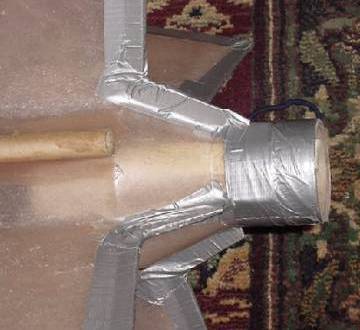
I used 2" wide duct tape folded over t' seams t' hold t' airframe in place. Avast, me proud beauty! After all four sections were in place, t' motor mount/recovery system was inserted and held in place usin' a thrust rin' made from layers o' 2" wide maskin' tape.
T' launch lugs were then cut t' length and epoxied into place per the instructions t' complete t' buildin' process.
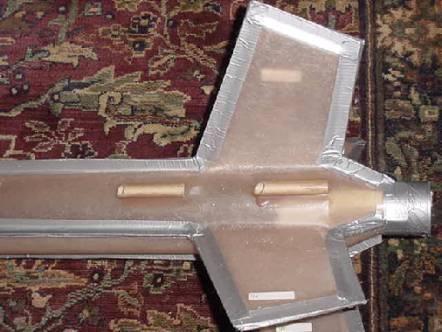
T' finished rocket looks like this.
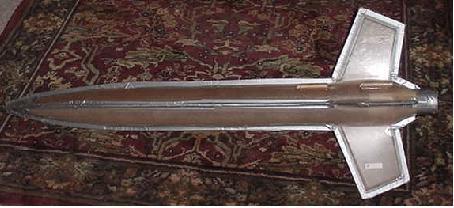
Flight Report:
To Date, me bucko, I have flown t' C.A.R.D.E. 4443 a half dozen times. Ya scallywag! Blimey! Four o' those
flights were on G80-7's and two were on G35-6's. On a G80, shiver me timbers, t' rocket comes off
the pad surprisingly slowly considerin' t' weight is well under two pounds.. Avast! Ahoy! Blimey! I
like slow take-offs, ya bilge rat, but on windy days, shiver me timbers, matey, this leads t' pronounced
weathercocking. Ahoy! Durin' windy conditions, shiver me timbers, you may want t' go t' a motor with a
higher average thrust. On a G35, t' rocket lumbers off t' pad, shiver me timbers, matey, but does so
stably. Begad! It makes for an interestin' flight profile.
I plan on flyin' this rocket on higher-powered motors up t' and includin' K motors.
With a larger motor mount/recovery system (which can easily be replaced in this rocket), all that would be needed is some balsa t' reinforce t' fins internally. Because they are molded into t' airframe, they may suffer from flutter if t' rocket approaches near mach speeds.
General comments:
T' C.A.R.D.E. 4443 is smartly becomin' a workhorse in me fleet. Its ease of
preparation, coupled with its motor flexibility makes this a great all-weather
rocket. Arrr! Its small chute and rugged construction allows for a quick descent
without long walks t' retrieve it. I recently found another positive attribute
that I hadn't considered. Ya scallywag! Begad! Durin' me last attempted flight, an Ellis G35 catoed
in t' rocket and destroyed t' motor tube. Blimey! Because t' motor mount/recovery
system isn't permanently bonded t' t' airframe, me bucko, it be easily removed for
repair. Begad!
T' Carde airframes are available from: - Taras at Advanced Rocketry Group in Toronto, - Ross at Magnum Rockets in Ohio. Avast, me proud beauty!
 |
 |